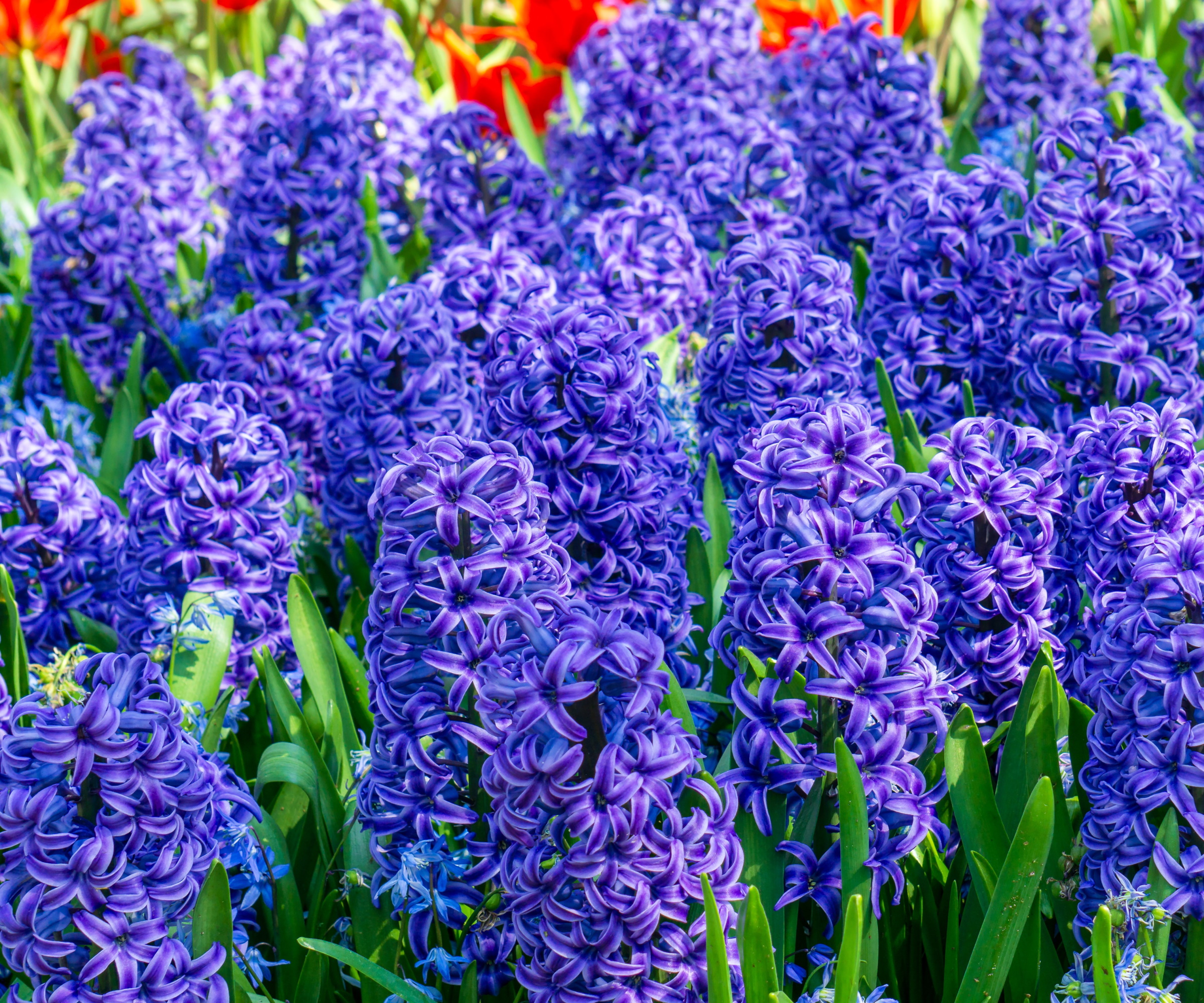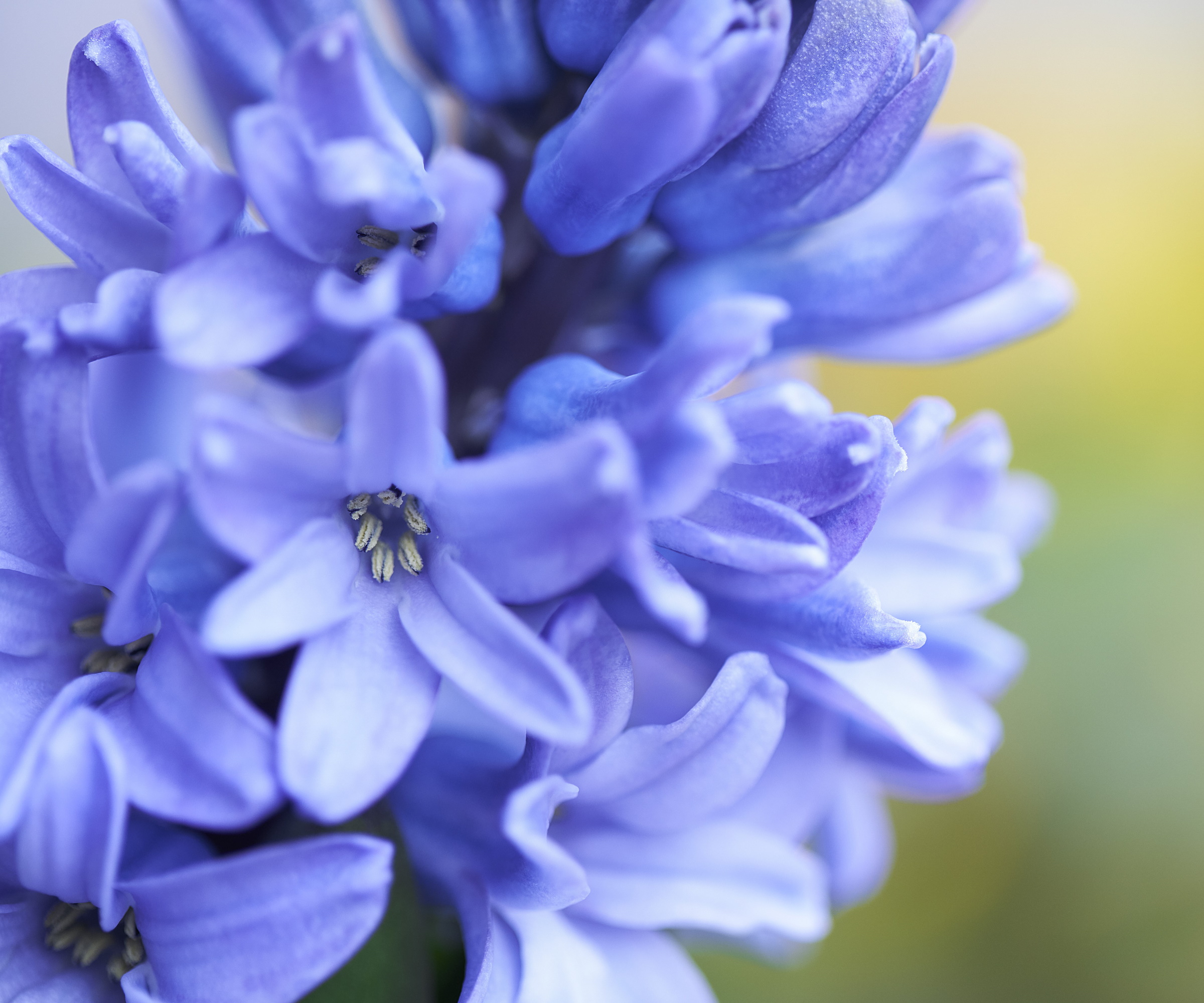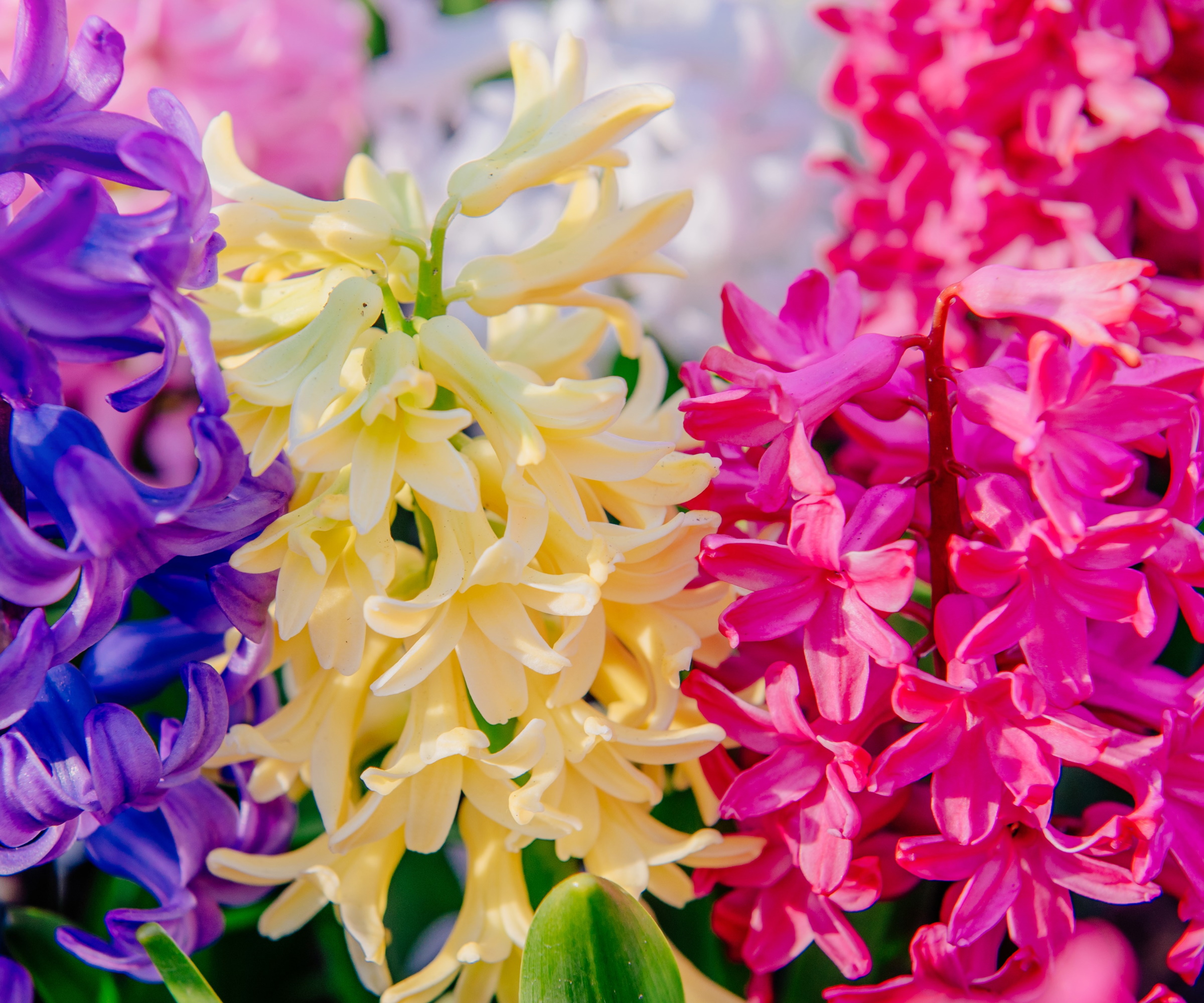
Hyacinths are fragrant and colorful spring bulbs that can flower successfully for several years if given proper care. Deadheading hyacinth blooms is an important step, and knowing how and when to do this is crucial if you want your bulbs to return year after year.
Many of the best hyacinth varieties produce brilliant blooms in a wide range of colors, including pink, yellow purple and blue. 'City of Harlem' is one of my favorites, blooming in a soft, creamy yellow, whereas 'City of Bradford', another favorite, produces lilac-blue flower spikes with a wonderful perfume that can fill the backyard. Proper care is needed to ensure your prized hyacinths will return.
Once hyacinth blooms begin to fade in late spring, it is important to deadhead your flowers and doing so will ensure that your bulbs bloom again next year. Here, gardening experts share advice on how to deadhead and care for hyacinths after they have finished blooming.

How to deadhead and care for hyacinths after flowering
Deadheading hyacinth blooms is an important step to take when growing these spring flowering blooms. The timing for this task will depend on the climate and flowering time of your bulbs. However, when flower stems begin to droop and turn brown, it is time to reach for the pruning shears and get snipping.
How to deadhead hyacinths

After blooming in spring, hyacinth flower stems will begin to wither and droop. 'When hyacinth flowers turn brown and drop, you should cut the flower stem,' says Megan Foster, perennial and bulb expert for American Meadows.
'Knowing where to cut is crucial,' Megan continues. 'Using your pruning shears, cut the flower stems back as low as possible, say 1 inch from the base, but leaving the cuff of leaves to continue feeding the plant through photosynthesis. This is how the bulb regenerates for next year’s flowering.'
Eventually, your hyacinth bulbs will go dormant in summer. 'If in midsummer you’re seeing that the leaves have turned yellow or brown and appear dried, go ahead and gently remove the leaves down to soil level,' Megan adds.
For those gardeners who chose to grow hyacinth bulbs in containers, the same principles apply. Once flower stems begin to droop and brown, take the time to carefully deadhead and remove spent stems from your pot displays, leaving the foliage so that the bulb can store as much energy as possible before its summer dormancy.
Felco pruning shears are high-performance and perfect for gardeners of any ability. These premium snippers are constructed of forged aluminum and hardened steel. These pruners are strong, and able to cut a mixture of stems from perennials, shrubs and thin branches.
Should you feed hyacinth bulbs?

It is a good idea to fertilize your hyacinth bulbs in the spring, to ensure that the bulbs have plenty of nutrients needed to bloom. As a professional gardener, I typically feed hyacinth bulbs at the point when they begin to shoot in late winter or early spring. Once I can see the green shoots emerging, this is the time to feed.
In addition, when growing hyacinths in the ground you can also feed them in the fall (if you can remember where you planted them). This second feeding in the fall is recommended as it will help the bulbs prepare for flowering the following spring.
Using a fertilizer that is high in phosphate, such as bone meal, available from Walmart, scatter fertilizer on the surface, which will eventually soak through and reach the hyacinth bulbs.
Should you lift hyacinth bulbs?

'In areas where hyacinths are hardy and are grown as perennials, you can leave them in the ground over winter, but it is a good idea to lift and divide them every 2 to 3 years,' says Ali Mills, horticulturist for American Meadows.
'If your hyacinths are happy, the original bulbs will produce bulblets, or small bulbs that appear as offshoots of the parent bulb. It is advisable to dig them up every few years after flowering, separate off the bulblets, and replant,' says Ali. Doing so will help to grow your collection.
If you are growing hyacinths in a container, you can choose to leave them in their pot, watering every so often until the foliage turns yellow and can be cut back, or you can lift the bulbs in early summer, once the foliage has turned yellow. Once dry, bulbs can be stored in a dark, cool place, to be planted again in the fall.
FAQs
When is the best time to deadhead hyacinths?
There is no fixed time to deadhead hyacinths, but you will know when to do this by regularly inspecting these spring flowers. Once your hyacinth flower stems look tired and begin to droop, you will know that it is time to snip them. I prefer to deadhead little and often, spending five minutes each day removing those flowers that are finished and leaving any that remain in bloom.
Caring for your spring flowering bulbs is important, and by deadheading and feeding your bulbs, they should return next year and bloom again, filling your backyard with color and fragrance. For more information on caring for spring flowering bulbs, consider our guide on how to fertilize tulips.







